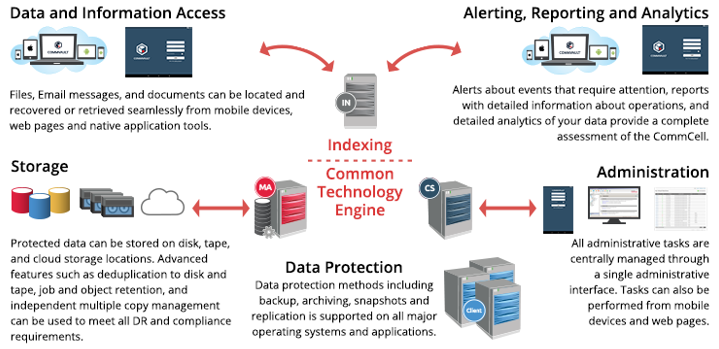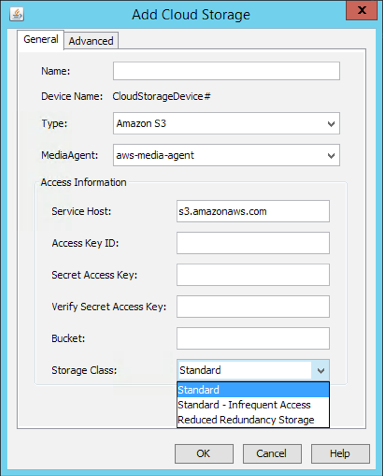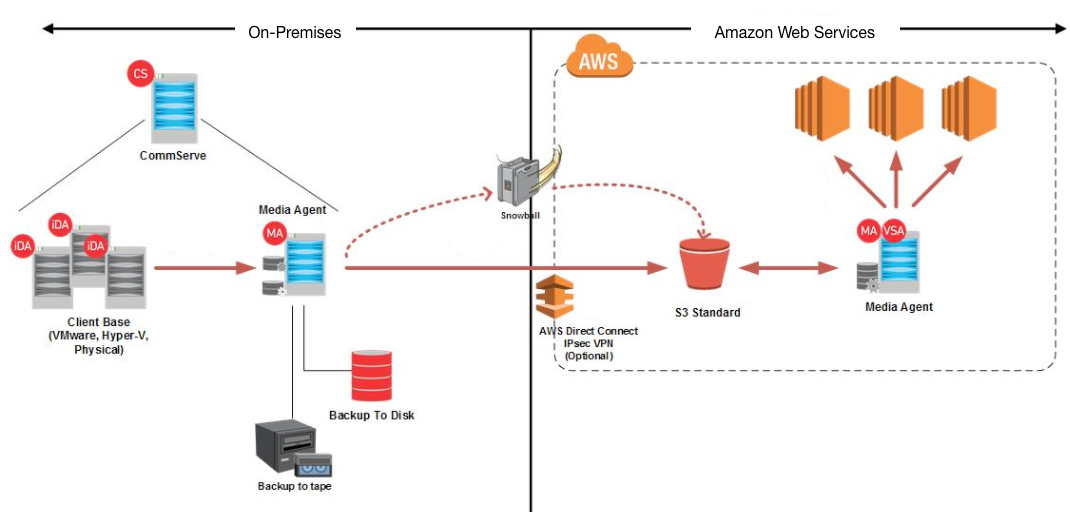AWS Partner Network (APN) Blog
Streamlined Cloud Data Management with Commvault
By Michael Barrow, Technical Alliance Architect, Cloud Providers, Commvault. Commvault is an Advanced APN Technology Partner and AWS Storage Competency Partner.
Cloud data management is an important part of your cloud journey, but it doesn’t have to be overly complicated. When your cloud strategy includes automated, repeatable processes for data migration, data management, and using data in the cloud, you can more quickly realize the benefits of your cloud projects.
Commvault: evolved data protection for a cloud-first world
Commvault, a comprehensive data management platform for both on-premises and cloud data, provides holistic data protection and data management (e.g., archiving, compliance, cataloging, e-Discovery, or identification and classification). Commvault software interoperates with every major operating system, application, and storage platform.
With Commvault, organizations can deftly manage business-critical information living on virtual machines (VMs) or physical servers, whether they are deployed in traditional data centers, the cloud, or both.

Commvault data protection software drives data protection, data backup, and data management for both on-premises and cloud resources.
Commvault software integrates with Amazon Elastic Compute Cloud (Amazon EC2), Amazon Relational Database Service (Amazon RDS), Amazon Simple Storage Service (Amazon S3 & S3-IA), Amazon Glacier, and AWS Snowball (Snowball). We find that the Commvault solution can help AWS customers meet their requirements in the AWS Shared Responsibility Model. Plus, with the ability to convert Microsoft Hyper-V or VMware virtual machines into Amazon EC2 instances, Commvault can help optimize the migration of on-premises workloads onto AWS.
In addition to standard applications (Oracle, Exchange, SQL Server, SharePoint, SAP, DB2, Informix, MySQL, and PostgreSQL), Commvault provides protection for leading big data applications, like Greenplum, Hadoop, and MongoDB. Commvault software can also preserve assets stored in Software as a Service (SaaS) platforms, like Microsoft Office 365 (O365), Salesforce, Gmail, or Google Drive.
Finally, Commvault offers both source and target compression and dedupe to minimize load on Amazon EC2 instances during backup and/or archive operations, and greatly reduce network bandwidth and storage consumption.
Joint Use Cases: AWS and Commvault Data Management
With tight integration between AWS and Commvault, joint customers can see significant value in a variety of use cases.
Data backup to the cloud replaces tape storage
We find that replacing complicated and expensive tape operations with cloud-based data backup is one of the quickest and easiest ways to start a transition to the cloud.
Commvault provides native support of both the Amazon S3 and Amazon Glacier APIs, so you don’t need to install and manage complex cloud gateways.
In just minutes, an on-premises Commvault installation can be configured for data backup to Amazon S3 or Amazon Glacier. The whole process consists of a few simple steps: set up an account on AWS, create a bucket, create a cloud library pointing at the bucket, and finally write data to the cloud library.

Add cloud storage dialog
See a short video demo of Commvault data backup to Amazon S3: Two clicks to the Cloud with AWS.
Data protection for Amazon EC2-based workloads
Commvault provides two choices for protecting Amazon EC2 workloads. First, the Commvault Virtual Server Agent (VSA) manages AWS-native data protection, for protecting file-based workloads or creating disaster recovery copies of instances. Commvault can create and manage snapshots of Amazon EC2 (and Amazon RDS) instances and manage copying snapshots to other regions. Commvault provides protection without the pain of maintaining complex scripts — saving effort, improving recovery, and reducing costs.
On the other hand, when application-consistency or granular recovery is needed, installing the Commvault agent within the guest OS is the way to go. It provides backups and archiving, and supports more flexible recovery options.

The Commvault rule groups feature even supports custom tags to select Amazon EC2 instances.
Fast, secure data migration to Amazon EC2
Commvault customers also redeploy on-premises VMs to AWS for test, disaster recovery, or permanent migration. With Commvault, you can backup VMs at the hypervisor level (Microsoft Hyper-V or VMware), restore the image onto AWS and convert into an Amazon EC2 instance. As part of the restore and conversion process, you can set the name of the instance, the availability zone, instance type, and network and security group settings.
Even moving hundreds of terabytes to AWS is a cinch with Commvault integration with Snowball. Rather than pointing a Commvault cloud library at Amazon S3, point to a host running the Snowball adapter and Commvault MediaAgent software. Once the data is transferred to AWS, you can reconfigure the cloud library to point at the Amazon S3 endpoint to continue normal backup and/or archive operations.

Architecture for VM migration from on-premises to Amazon Web Services
Data protection, compression, and deduplication for Amazon S3 buckets
AWS customers have several choices to preserve critical data written to Amazon S3: bucket versioning, cross-region replication, and MFA delete.
Commvault provides another protection option via the same policy-driven framework used for filesystem and application data. An appropriate storage policy can drive object copies to Commvault and into an Amazon S3 bucket in the same region as the origin or another region, an Amazon Glacier archive, or even an on-premises storage array. Just like any other data written to Commvault, compression and dedupe can significantly reduce the cost of data copies.
Archive SaaS and Office 365 to AWS
SaaS application and data backup is critical, especially as more line of business owners purchase new SaaS offerings and expect IT to support them in the cloud.
O365 is a popular example. Although O365 has offerings for content archival, an organization may want to manage this process on a disparate infrastructure as part of a larger compliance strategy or to add provider diversity to their stack.
Commvault data backup and archive of Exchange data from O365 can be deployed on Amazon EC2 instances with content stored in a compressed and deduped format within Amazon S3 or Amazon Glacier. With the add-in for Outlook installed on desktops, end users can seamlessly access messages and attachments that have been archived.
Additionally, corporate compliance personnel can use Commvault e-Discovery capabilities to search and execute legal holds against data in the AWS-resident archive without needing to interact with the O365 deployment.
The result is a system that provides infrastructure diversity, cost control, and centralized governance of critical business data.
Secure, Flexible Data Management
Commvault provides a single solution for managing data across files, applications, databases, hypervisors, and cloud. Commvault has complete data management capabilities across data backup, recovery, management and e-Discovery, that are tightly integrated with the functionality offered by AWS.
Best of all, Commvault gives you a “single pane of glass” to manage data protection and data management needs across the entire infrastructure and application stack, whether it is on-premises, on AWS, or a combination of the two.
Learn more about Commvault data management for AWS.